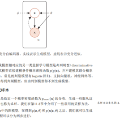Embedding-aware generative model (EAGM) addresses the data insufficiency problem for zero-shot learning (ZSL) by constructing a generator between semantic and visual feature spaces. Thanks to the predefined benchmark and protocols, the number of proposed EAGMs for ZSL is increasing rapidly. We argue that it is time to take a step back and reconsider the embedding-aware generative paradigm. The main work of this paper is two-fold. First, the embedding features in benchmark datasets are somehow overlooked, which potentially limits the performance of EAGMs, while most researchers focus on how to improve EAGMs. Therefore, we conduct a systematic evaluation of ten representative EAGMs and prove that even embarrassedly simple modifications on the embedding features can improve the performance of EAGMs for ZSL remarkably. So it's time to pay more attention to the current embedding features in benchmark datasets. Second, based on five benchmark datasets, each with six any-shot learning scenarios, we systematically compare the performance of ten typical EAGMs for the first time, and we give a strong baseline for zero-shot learning (ZSL) and few-shot learning (FSL). Meanwhile, a comprehensive generative model repository, namely, generative any-shot learning (GASL) repository, is provided, which contains the models, features, parameters, and scenarios of EAGMs for ZSL and FSL. Any results in this paper can be readily reproduced with only one command line based on GASL.
翻译:嵌入式基因化模型(EAGM)通过在语义和视觉特征空间之间建造一个生成器,解决零光学习的数据不足问题。由于预先确定的基准和协议,ZSL的拟议EAGM数量正在迅速增加。我们认为,现在该是退一步,重新考虑嵌入式基因化模型的时候了。本文的主要工作是双重的。首先,基准数据集中的嵌入功能可能受到某种程度的忽视,这可能会限制EAGM(ZSL)的绩效,而大多数研究人员则侧重于如何改进EAGM(ZSL)的绩效。因此,我们对10个具有代表性的EAGM(ZSL)进行系统化评估,证明对嵌入式功能的简单修改甚至会明显改善ZSL的绩效。因此,现在该时间是更多地关注基准数据集中目前嵌入式的嵌入特征。第二,基于5个基准数据集,每套有6个任意的学习情景,我们系统比较了10个典型的EAGM(SL)的性能,而我们给出了一个强大的基准基线,用于零光化GSL的GSL(ASL)和GIS(SL)的任何GIS(O-SL)数据库的模型是同步的模型,任何GIS-SIS-SL)的模型。


